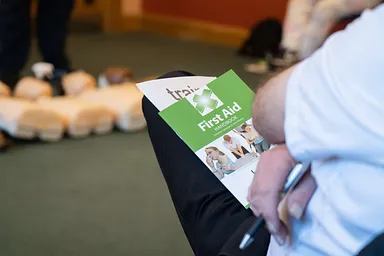Hypothermia occurs when the body’s core temperature drops to below 35°C. Most people are unaware that they are succumbing to this potentially life threatening condition.
Some basic first aid knowledge can go a long way during the Christmas party season. It is not uncommon for party goers to become stranded outside without adequate clothing to survive sub zero temperatures.

Symptoms
Generally, look out for mumbles (slurred speech), grumbles (irritability) and fumbles (lack of coordination) as signs that someone is hypothermic. The symptoms can also be categorised based on severity:
Mild - shivering, unable to perform complex tasks with hands and a cold sensation across the body.
Moderate - intense shivering, difficulty in speaking, becoming withdrawn, becoming sluggish, difficulty in walking.
Severe - shivering stops, blue tinge to skin, unable to walk, confused and erratic behaviour, semi conscious, possibly unconscious.
Risk Groups
- Those who have fallen in water - 25% faster heat loss in water.
- Elderly people - vulnerable if collapsed on cold floors.
- Heavy alcohol / drug users - will lose heat faster.
- Party goers who have been stranded / fallen asleep outside.
Treatment of Mild / Moderate Hypothermia
Mild to moderate cases need to be dealt with early to prevent the casualty from deteriorating. Rewarming the casualty can bring them back to normal, without any long lasting damage. Try remembering the following tips:
- Get the casualty out of wet clothing and replace with dry clothing / blankets;
- Get the casualty indoors and increase the room temperature if possible;
- Create additional layers around them with blankets, sleeping bags, hats and gloves; and
- Give them warm drinks and foods that they can easily swallow that are rich in sugars e.g. chocolate.
Treatment of Severe Hypothermia
Severe cases of hypothermia are potentially life threatening and urgent action is required to save the casualty. First dial 999/112 stating your location and the severity of the symptoms. Consider using this four step protocol in these cases:
- Insulate the ground underneath the casualty with mats, cardboard or blankets;
- Create roughly four inches of insulation using clothing, wool blankets and the space blanket in a first aid kit;
- Place heat pads / hot water bottles near the neck, under the armpits and groin area; and
- Encourage them to drink warm water with sugar dissolved within it.

.jpg)
.jpg)